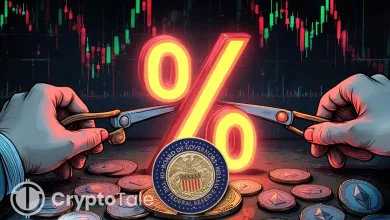U.S. Crypto Legislation Sparks $4 Billion Stablecoin Surge

- GENIUS Act spurs $4B stablecoin surge, boosting U.S. digital dollar dominance.
- Tether and USDC gain traction as regulatory clarity attracts institutional capital.
- DAI faces stagnation risk as fiat-backed stablecoins thrive under new U.S. laws.
New U.S. legislation has propelled a $4 billion surge in stablecoin supply within a single week. The GENIUS Act, signed on July 18, provided long-awaited regulatory clarity, triggering renewed capital inflow into the stablecoin sector. This shift signals both rising confidence in U.S. digital asset policy and growing international concern over America’s expanding control in the global digital finance arena.
USDt: Tether Tightens Its Grip on the Market
Tether’s USDt experienced accelerated growth after the GENIUS Act went into effect, expanding its already dominant market position. The act mandates full reserve backing, licensing, and auditing for fiat-backed stablecoins, aligning perfectly with Tether’s operating model. This regulatory alignment allowed Tether to scale operations rapidly and attract fresh institutional capital.
While some platforms hesitate, USDt gained momentum across exchanges and payment channels due to legal clarity. Traditional finance players now view USDt as a compliant digital dollar alternative. This shift further consolidates Tether’s lead in global stablecoin circulation.
Tether’s success now raises geopolitical questions as it expands U.S. monetary reach through blockchain rails. The increase in demand also reflects growing user confidence in regulated digital cash substitutes. As capital flows rise, other nations face mounting pressure to respond with local alternatives.
USDC: Circle Strengthens Its Institutional Appeal
Circle’s USDC also saw renewed demand after the GENIUS Act, positioning itself as the go-to stablecoin for regulated environments. Circle emphasized transparency and compliance long before this bill, so the new law reinforced its core strengths. In turn, USDC’s market share expanded quickly across banking and fintech sectors.
The GENIUS Act legitimized stablecoins like USDC for banks, asset managers, and public companies. This shift allowed Circle to activate previously sidelined partnerships. USDC became a preferred choice for dividend payments, cross-border settlements, and tokenized finance platforms.
With expanding use cases and mainstream acceptance, USDC now operates as a digital cash layer for compliant institutions. The growth also strengthens the U.S. dollar’s digital influence globally. As Circle collaborates with financial giants, its position within the new regulated ecosystem solidifies further.
DAI: Decentralized Model Faces New Pressures
The dominant crypto-backed stablecoin DAI was not directly helped by the GENIUS Act. Unlike counterparts relying on fiat money, DAI functions on overcollateralized digital assets, such as ETH. This decentralized form falls beyond the existing regulatory system and, therefore, restricts its expansion through regulated forms.
Nonetheless, DAI also remains a key component of decentralized finance, where on-chain activity continues to generate notable demand. Its decentralization and transparency are interesting to users who seek independence from a conventional financial system. However, with the movement of institutions to fiat-supported options, the power of DAI is in danger of stagnation without a legal framework.
The comparison highlights an increasing disparity between blockchain innovation and off-chain governance. Though DAI is symbolic of financial sovereignty, the level of its scalability is currently subject to upcoming legal constructs. The GENIUS Act threatens to either nudge DAI to evolve or stick with enclaved DeFi ecosystems.
Related: Mastercard Moves on Stablecoins Post-GENIUS Act
Digital Dollar Influence Expands Amid Global Silence
The GENIUS Act has empowered U.S.-based stablecoins to export the digital dollar worldwide with unprecedented speed. With centralized backing and federal oversight, these tokens now function as digital representatives of U.S. monetary policy. As their circulation expands globally, they reinforce America’s dominance in the crypto-financial race.
Meanwhile, other nations remain unprepared to counter this influence with their own sovereign digital currencies. While Europe debates frameworks and Asia tests pilots, U.S.-compliant stablecoins are already live and growing. This creates an imbalance, where global commerce increasingly relies on U.S.-anchored digital instruments.
Coupled with a similar storyline, this trend presents a possibility of the digital economy reproducing the traditional power arrangements, with the U.S. playing a leadership role. With new bills, such as the Clarity for Payment Stablecoins Act, the country is sending a message: pioneer or be left behind. Stablecoin inflation is not only a reflection of the buy pressure in the market, but the new wave in digital financial domination.




